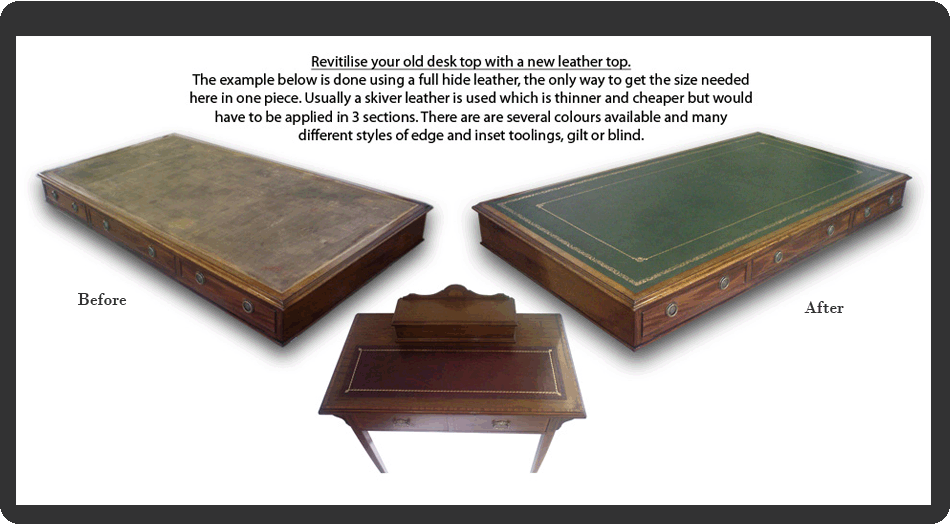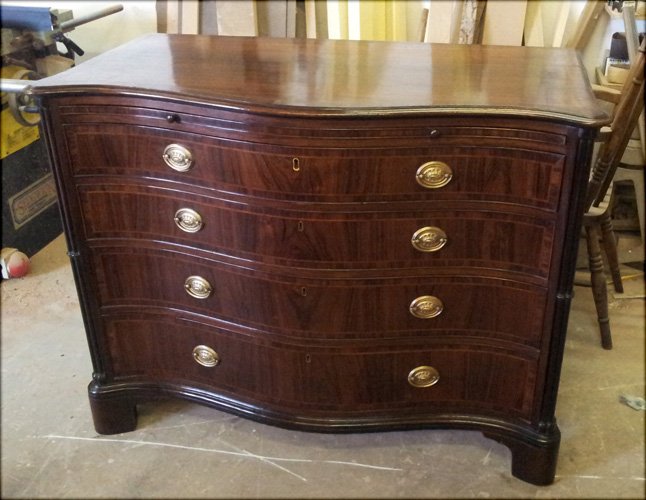Antique Restoration
Antique restoration involves a lot of different skills, there is far more involved in a professional restoration than just a quick wax. Firstly you need cabinet making skills to understand how the furniture was made in the first place and also how to carry out any repairs.
Veneering
Most antiques, especially the more decorative, ones are veneered or have veneered panels, these would have been laid by hand using traditional methods, no heated veneer presses here.
The look
Probably most important of all is an understanding of how antique furniture should look, there's not much point in having all the skills above and using them to make everything look brand spanking new. Every age and style has a different look about it and that knowledge can only be learnt from working on the actual furniture. Sure, you could read books and get an outline, but in reality, my 30 years of hands on experience is the only way. A piece of antique furniture when fully restored should look like a piece that has been around for one or two hundred years and has had a very good life....... not new!
Every age and style has a different look about it and that knowledge can only be learnt from working on the actual furniture. Sure, you could read books and get an outline, but in reality, my 30 years of hands on experience is the only way. A piece of antique furniture when fully restored should look like a piece that has been around for one or two hundred years and has had a very good life....... not new!
Leather replacement
Replacing the leather on the top of a desk or Bureau makes a remarkable difference to the appearance of the piece, bringing it back to life. Why not think about changing the colour of the leather on your desk, this can really change the look and feel of the piece and the room it's in.

French polishing
This would need to include colouring and matching as well as being able to polish large areas by hand. Most people with a little knowledge would be able to French polish a small box or a stool, but a table top or a grand piano requires long learnt and practiced techniques.

